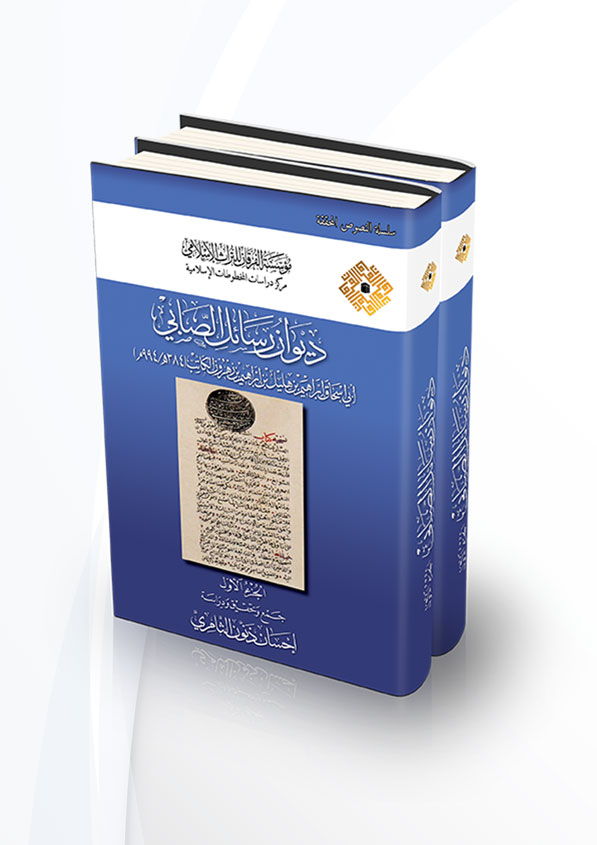Books written in various periods of Islamic history are accepted as primary sources for their respective periods, notably those written by clerks (kātibs) of dīwāns and by persons who served in the state’s institutions or who were close friends with the senior officials of the state. These include letters written by ʿAbd al-Ḥamīd al-Kātib (d. 132/750), the clerk of Marwān II (r. 127-132/744-750), the last Umayyad caliph; Ibn al-Muqaffaʾ, a witness of the transition period from the Umayyads to the ʿAbbāsids; Ibn al-Mowṣalāyā (d. 497/1104), who served as a man of letters (kātib) in Dīwān al-inshāʾ for over fifty years beginning from the era of al-Qāʾim bi-Amr Allāh (r. 422- 467/1031-1075) and Abū Isḥāq al-Ṣābī, a member of the al-Ṣābī family recognized in training adībs (literary men) and kātibs in the 4th/10th and the 5th/11th centuries.
The letters that were written by Abū Isḥāq al-Ṣābī on behalf of ʿAbbāsid caliphs, such as al-Muṭīʿ lillāh (r. 334-364/946-974) and al- Ṭāʾiʿ lillāh (r. 363-381/974-991), and on behalf of Buwayhid amīrs, such as Muiʿzz al-Dawlah (r. 334-356/945-967), ʿIzz al-Dawlah Bakhtiyār (r. 356-367/967-978), ʿAḍud al-Dawlah (r. 367-372/978-983), and Samsām al-Dawlah (r. 372-376/983-987, 379-388/989-998) are significant sources because they reflect both the relationship between the ʿAbbāsids and the Buwayhids, and the conflicts of Buwayhid amīrs among themselves. The first person who drew attention to these letters, which were originally in manuscript form in several different library collections, was Amīr Shakīb Arslān (d. 1946). He decided to publish a critical edition of these 95 letters for libraries in Istanbul and titled it Mukhtār min rasāʾil al-Ṣābī. He was only able to include 42 of the letters. This edition was first published in 1898 in Lebanon (Baʿabdā) and later reproduced by different publishing houses. In an introduction to the letters, Shakīb Arslān added the biography of Ṣābī written by Abū Manṣūr al-Thaʿālibī provided information about individuals mentioned in the text and briefly explained some of the words and events mentioned in the text. After Shakīb Arslān’s first edition, interest in the letters of al-Ṣābī grew in academic circles and many works were written about them at different levels.
Iḥsān Dhannūn al-Thāmirī recently published the letters of al-Ṣābī with a long introduction under the title Dīwān rasāʾil al-Ṣābī. This edition brings together treatises published by Shakīb Arslān and others as well as certain treatises that were previously in manuscript forms. al-Thāmirī’s introduction includes a discussion of the relationship of al- Ṣābī with the Buwayhid amīrs and with some prominent literary men of the era, his scholarly and literary skills, his religious beliefs, al-Ṣābī’s lineage and the name of his father, the political situation of his time, his works, the significance of the letters, citations on the existence of these letters in historical sources, and available manuscripts of the treatises (pp. 19-81). While the data given in this section about the life of al-Ṣābī and his treatises are satisfactory as an introduction, it should be noted that the topics could have been classified more systematically with the use of subtitles. For example, in the beginning, the political and administrative context of the 4th/10th century, the discussion on al- Ṣābī’s lineage, his father’s name and life, his works, and his political and administrative network could have been addressed separately. The manuscript copies, back editions of the letters, and the methodology followed in the edition could have been discussed later.
A few of al-Thāmirī’s introductory remarks should be highlighted. Al-Masʿūdī (d. 345/956) who assembled the first systematic data about the Ṣābians, and almost all authors who followed him identified an essential difference between the two groups of Ṣābians: the Ṣābians of al-Baṭāʾiḥ lived in marshlands (baṭāʾiḥ) between al-Baṣrah and Wāsiṭ in southern Iraq, while the Ṣābians of Ḥarrān lived in Ḥarrān in northern Mesopotamia. While the sources are in consensus in classifying the Ṣābians in according to the regions where they lived, they make quite different statements regarding whether the Ṣābians were pagan, believed in the stars or adopted Christianity. Because of these different approaches to the beliefs of the Ṣābians, it is difficult to reach a conclusion about the religious preference of, particularly, al- Ṣābī and other Ṣābian people who lived in the classical period. Even though al-Thāmirī recognizes this difficulty, he refers to the fatwá of Abū Yūsuf (d. 182/798) and Muḥammad ibn Ḥasan al-Shaybānī (d. 189/805) (which permitted marriage with the Ṣābians and eating animals that the Ṣābians had cut) and claims that the family of al-Ṣābī has their origins in the marshlands of southern Iraq and that they accepted Christianity (pp. 49-50). Considering that these fatwás were narrated by Ibn Buṭlān (d. 455/1063), a prominent physician of the Buwayhid era who had close relations with al-Ṣābī family, al-Thāmirī’s claim, at first reading, appears acceptable. But in a previous section (p.33) al-Thāmirī points to one of the letters in which al-Ṣābī referred to his al-Ḥarrānī lineage and says that the ancestry of al-Ṣābī was based on Ḥarrān. There is an apparent contradiction in al-Thāmirī’s opinions. Since al-Ṣābī used al-Ḥarrānī lineage in the letters, giving hints about his origin, and as mentioned above, the sources are not in consensus, it is clear that al-Thāmirī’s argument about al-Ṣābī’s origins must be rethought.
Another of al-Thāmirī’s topics is the correct rendering of al-Ṣābī’s father’s name. In previous studies, this name was written Hilāl (ﻫﻼل). But al-Ṣābī wrote Hillīl (ﻫﻠﻴﻞ) instead of Hilāl in his genealogy in the letters (which reflected the character of his own handwriting), and some of al-Ṣābī’s contemporary authors, such as Abū ʿAlī al-Tanūkhī (d. 384/1091), also wrote the name Hillīl (pp. 51-55). For these reasons it appears that al-Thāmirī’s preference is correct. It is worth mentioning that al-Thāmirī criticizes the editors of Dhayl Tajārib al-umam by Abū Shujāʿ al-Rūdhrāwarī (d. 488/1095) and Inbāh al-ruwāt by Ibn al-Qifṭī (d. 646/1248), because they changed Hillīl to Hilāl (p. 5 fn. 4, 6).
At the end of the introduction, al-Thāmirī writes about manuscript copies of the treatises that are still held in various libraries in unedited form. But he does not evaluate back editions of the letters, except those published by Shakīb Arslān, or the studies that have examined these treatises. Klaus Hachmeier’s PhD dissertation is among these studies and is worth a closer look. A few years after completing his thesis, Hachmeier published an article that summaries of the thesis and makes some remarkable points about the letters. One of the most substantial issues handled by Hachmeier in the article regards number of manuscript copies of the letters. From al-Thāmirī’s statements it is understood that he based his edition on 10 copies (pp.71-77). But in Hachmeier’s study, the number given is 19 (p. 107). These two different counts also influenced the total number of letters. While al- Thāmirī says that the number of letters is 419 (p. 79), Hachmeier states that it is 523 (p. 107). There are also some differences in al-Thāmirī and Hachmeier’s descriptions of the physical features of the manuscript copies. This and other discrepancies suggest that there would be value in al-Thāmirī evaluating the back editions and studies of the letters.
Al-Thāmirī’s methodology in this edition is to separate the letters into seven titles. These titles are as follows: political (122), administrative (125), intercession (shafāʿah) (30), greeting (tahānī) (24), condolence (taʿziyah) (50), personality (shakhṣiyyah) (55), and different topics (13) (p. 79). The classification of the letters in this way, the explanatory footnotes, the explanation of Arabic words that might be misunderstood, and the detailed index all enable the readers to benefit from the work in a greater way. The appendix, which lists the names of the Buwayhid amīrs mentioned in the text and provides information collected from different sources about the beliefs and cultural features of the Ṣābians, also provides for better understanding of the letters.
In conclusion, this edition of the letters, the majority of which were previously still in manuscript form, will open the door for new perspectives and future work on the political and administrative history of the ʿAbbāsids and Buwayhids.
Note: From the review authored by Halil Ibrahim Hançabay, Ilahiyat Studies, Volume 9, Number 2, Summer / Fall 2018, pp.298-301. Published with permission.





Reviews
There are no reviews yet.